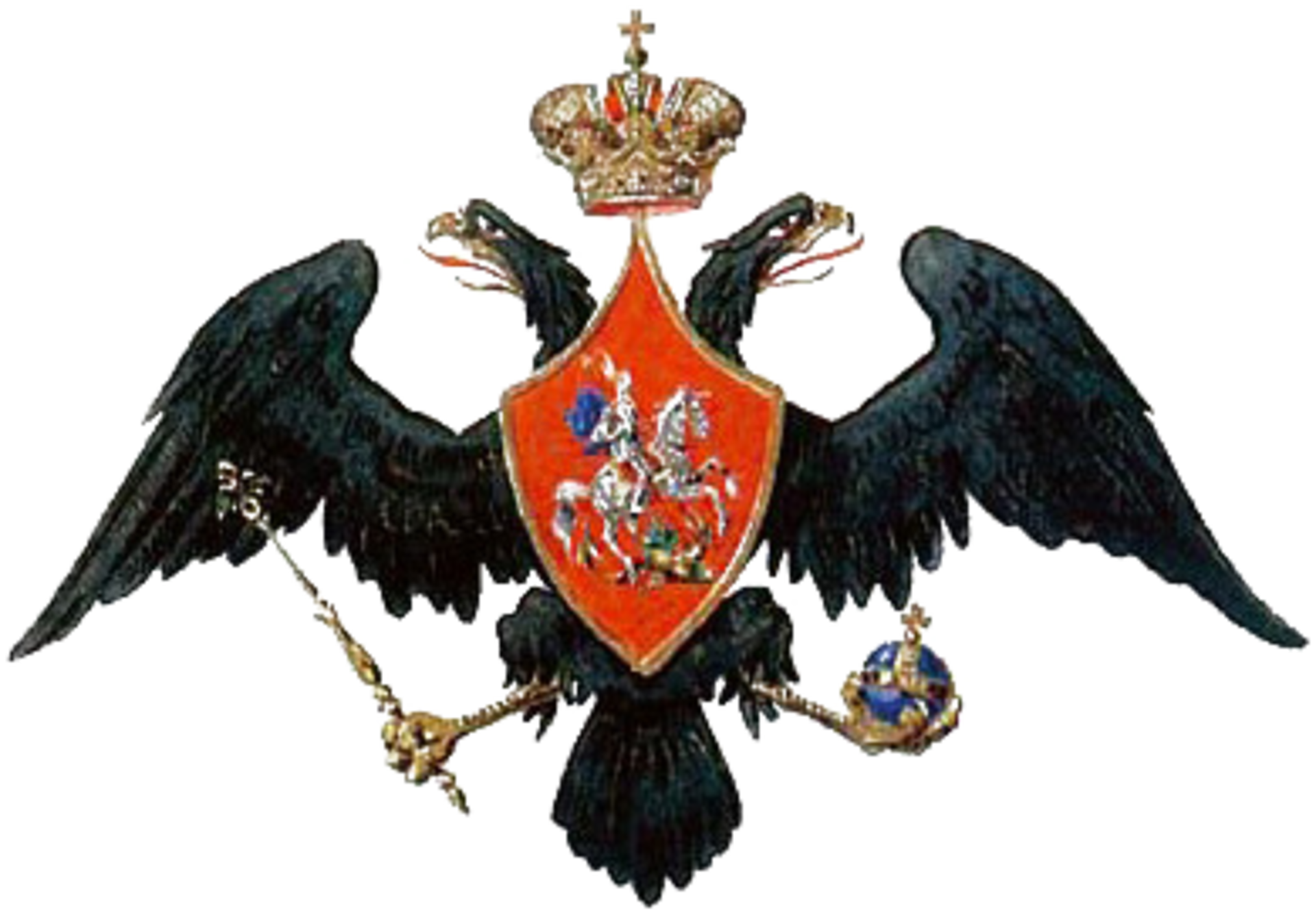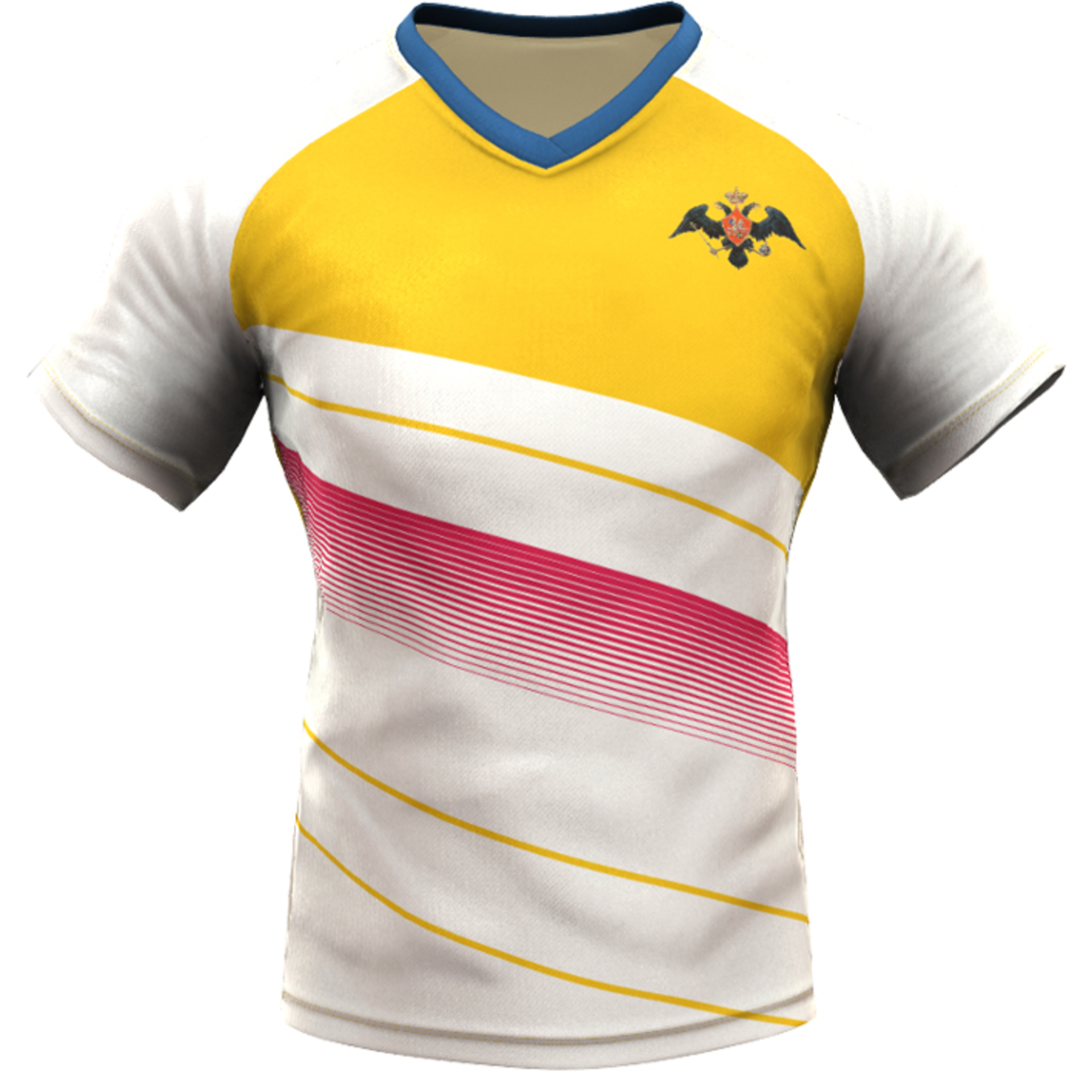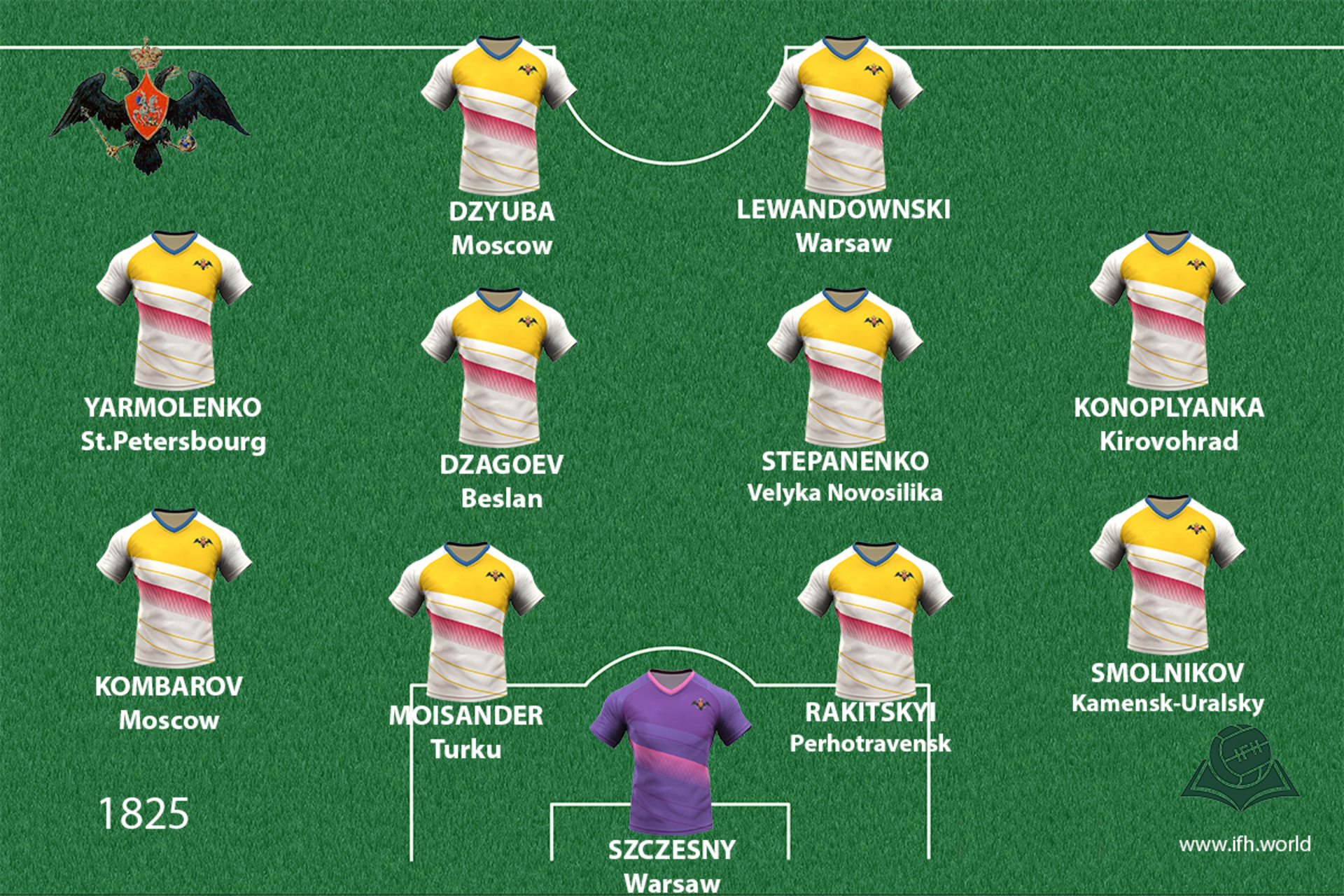Russian Empire
During the 19th century, the Russian army conquered Transcaucasia, central Asia and a part of the Far East, across from Japan. The Kingdom of Poland was created from the remains of Napoleon’s Duchy of Warsaw in 1815. It was autonomous at first (constitution, government, Sejm), but the monarch was the Russian emperor.

Coat of arms

Shirt
| Position | First name | Last name | Mjesto rođenja | Like | Dislike | |
|---|---|---|---|---|---|---|
| GK | Igor | AKINFEEV | Vidnoye |
15 |
4 |
|
| GK | Wojciech | SZCZESNY | Warsaw |
19 |
1 |
|
| DC | Guram | KASHIA | Tbilisi |
3 |
2 |
|
| DC | Niklas | MOISANDER | Turku |
0 |
0 |
|
| DC | Solom | KVIRKVELIA | Samtredia |
1 |
0 |
|
| DC | Yevhen | KHACHERIDI | Melitopol |
1 |
0 |
|
| DLC | Ragnar | KLAVAN | Viljandi |
4 |
0 |
|
| DLC | Yaroslav | RAKITSKY | Pershotravensk |
5 |
0 |
|
| DRL/MR | Igor | SMOLNIKOV | Kamensk-Uralsky |
4 |
1 |
|
| DR | Andreas | BECK | Kemerovo |
2 |
1 |
|
| DLC/ML | Fedor | KUDRYASHOV | Irkutsk |
4 |
0 |
|
| DLC/ML | Georgi | JIKIA | Moscow |
3 |
2 |
|
| DL/ML | Georgi | SCHENNIKOV | Moscow |
6 |
4 |
|
| DC/DMC | Roman | NEUSTADTER | Dnipropetrovsk |
2 |
1 |
|
| DMC | Taras | STEPANENKO | Velyka Novosilka |
3 |
1 |
|
| MC | Aleksandr | GOLOVIN | Kaltan |
5 |
0 |
|
| MC | Aleksey | MIRANCHUK | Slavyansk-na-Kubani |
4 |
1 |
|
| MC | Denis | GLUSHAKOV | Millerovo |
1 |
2 |
|
| MC | Pavel | MAMAEEV | Moscow |
4 |
1 |
|
| ML/DL | Dmitri | KOMBAROV | Moscow |
4 |
4 |
|
| MRLC | Oleg | SHATOV | Nizhny Tagil |
2 |
2 |
|
| AMC | Alan | DZAGOEV | Beslan |
3 |
0 |
|
| AMRLC | Viktor | KOVALENKO | Kherson |
3 |
0 |
|
| AMRL | Andriy | YARMOLENKO | St.Petersbourg |
0 |
0 |
|
| AMRL | Denis | CHERYSHEV | Nizhny Novgorod |
10 |
1 |
|
| AMRL | Yehven | KONOPLYANKA | Kirovohrad |
5 |
0 |
|
| FRLC | Dmitri | POLOZ | Stavropol |
2 |
0 |
|
| FRLC | Fyodor | SMOLOV | Saratov |
4 |
1 |
|
| FC | Robert | LEWANDOWSKI | Warsaw |
21 |
1 |
|
| FC/SS | Aleksandr | KOKORIN | Valuyki |
3 |
0 |
|
| FC/SS | Artyom | DZYUBA | Moscow |
9 |
1 |
|
| AMRL/DL | Oleksandr | ZINCHENKO | Radomyshl |
19 |
1 |
Such spatiality also demanded highly centralized governance if Russia wanted to function as a country as a whole. The last revolutionary attempt related to the revolutionary wave happened in Russia in 1825, when former military officers, inspired by the ideas of the French revolution hoped to turn the autocratic state into a constitutional regime. The uprising was preceded by almost a decade of ideological and political deliberation, but it would ultimately end catastrophically for the conspirators. The failure of this so-called Decembrist movement paralyzed any attempt of a bourgeois uprising in Russia for many decades. A constant of Russian foreign policy in the 19th century was the conflict with the Ottoman Empire, in the context of the Eastern Question. Ever since the 18th century, mercantile interests drew Russia to the Black Sea and, with control of the Straits, to the Mediterranean.
During the 19th century, Russia could play the religion card when achieving their economic and political interests among the Orthodox peoples in the Balkans. Through a peace treaty, it gained a kind of protectorate over Wallachia and Moldavia, Orthodox autonomous principalities in the Ottoman Empire, enabling it to influence sailing on the Danube. This established the basis for Russian politics that attempted to gain a protectorate over the Ottoman Empire through protectorates over Christians. Russian dominance would last until Russia was defeated in the bloody Crimean War (1853 – 1856) by the joint forces of the Ottoman Empire, France and Great Britain.
Sources
- Felipe FERNANDEZ-ARMESTO, Narodi Europe, Zagreb, 1997.,335
- Grupa autora, Povijest: Napoleon, restauracija i građanske revolucije (1800. - 1848.), knjiga XIII., Zagreb 2008.,344
- Grupa autora, Povijest: Kolonijalna carstva i imperijalizam (1871. - 1914.), knjiga XV., Zagreb 2008.,489
- Vasilj POPOVIĆ, Istočno pitanje , Sarajevo, 1956.
- Michal TYMOWSKI, Kratka povijest Poljske,Zagreb, 1999
- Coat of arms, https://en.wikipedia.org/wiki/Coat_of_arms_of_Russia
